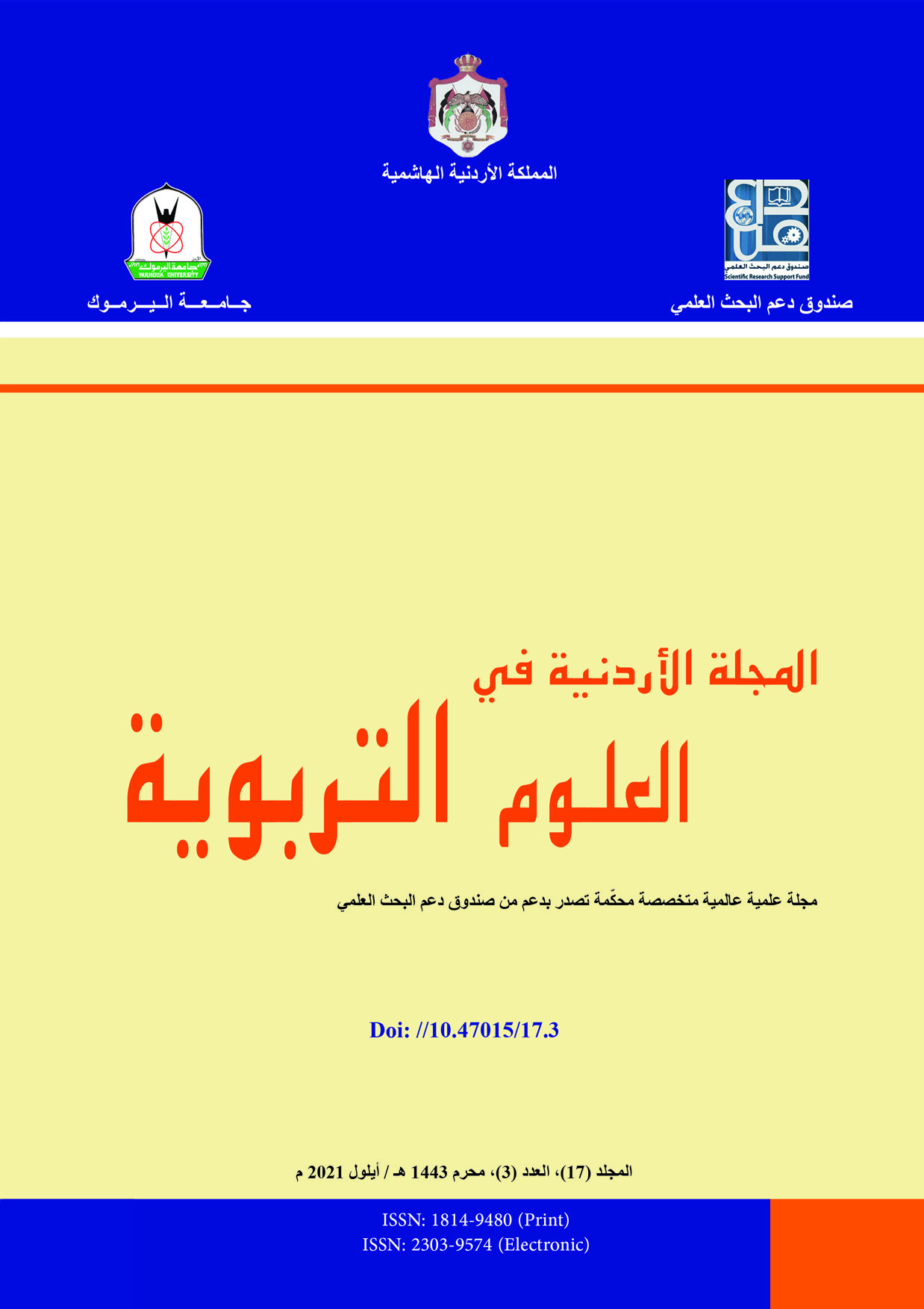أنماط التعلم لدى طلبة الصف التاسع في إربد وأثرها في تحصيلهم في الكيمياء
الكلمات المفتاحية:
نموذج هيرمان Herrmann، نمط تعلّم ، تحصيل، طلبة تاسعالملخص
هدفت الدراسة إلى استقصاء أنماط التعلّم لدى طلبة الصف
وأثرها على التحصيل في ،Herrmann التاسع بحسب نموذج هيرمان
مادة الكيمياء، واختلاف ذلك باختلاف الجنس . وقد تألفت عينة الدراسة
من ( 491 ) طالبا و ( 487 ) طالبة، واستخدمت استبانة لتحديد أنماط تعلّم
الطلبة عينة الدراسة. وقد أشارت النتائج إلى أن 82 % من أفراد العينة من
ذوي نمط تعلّم منفرد سائد، بينما كان 18 % منهم بنمطين أو ثلاثة
% أنماط. وكانت نسب أنماط التعلّم المنفردة السائدة عندهم هي : 34.5
الداخلي )، و 14.5 % للنمط ) D التفاعلي )، و 18.8 % للنمط ) C للنمط
الخارجي )، وقد تبين أن نسبة ) A الإجرائي)، و 14.2 % للنمط ) B
النمط التعلّمي المنفرد تختلف باختلاف ا لجنس، حيث كانت الأعلى للطلاب
C بينما كانت النسبة الأعلى للطالبات في نمطي التعلّم ،A في نمط التعلّم
كما أشارت النتائج إلى أن تحصيل طلبة الصف التاسع في الكيمياء ،D و
0.05 ) باختلاف نمط تعلّمهم، لصالح النمط =α) يختلف بدلالة إحصائية
ولم يكن هناك فروق دالة في ، C و B مقارنة مع كل من نمطي التعلّم D
تحصيل الطلبة تعزى للجنس، أو للتفاعل بين نمط التعلّم والجنس .

